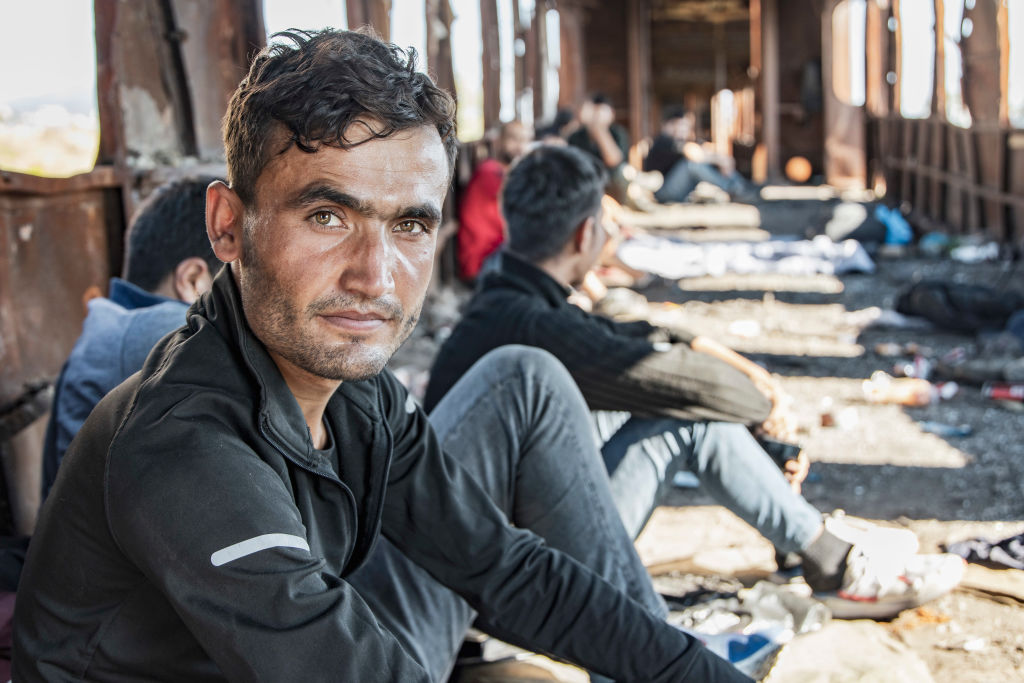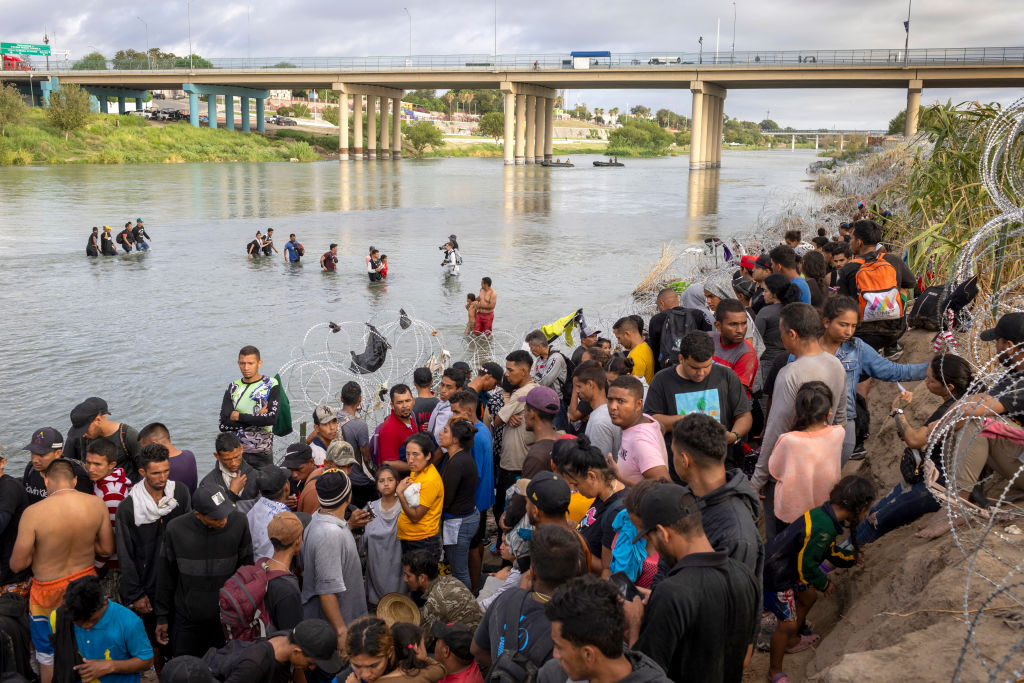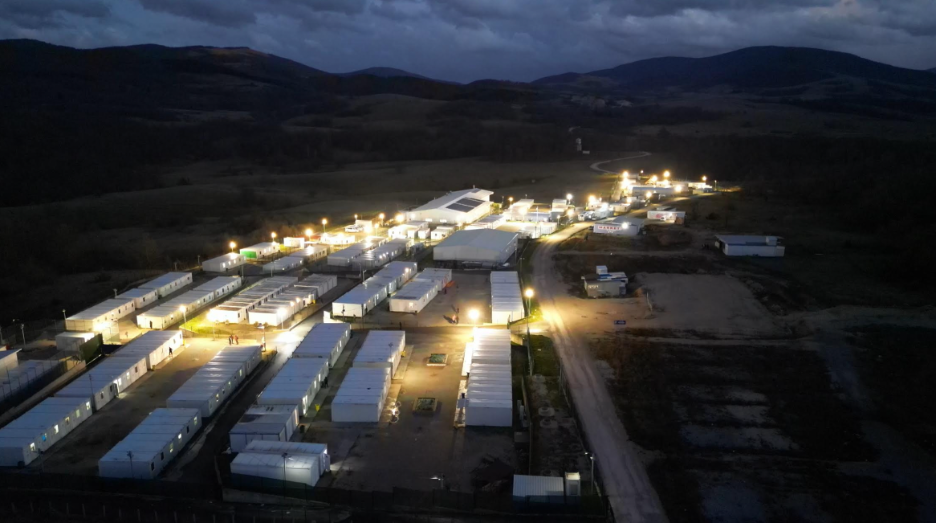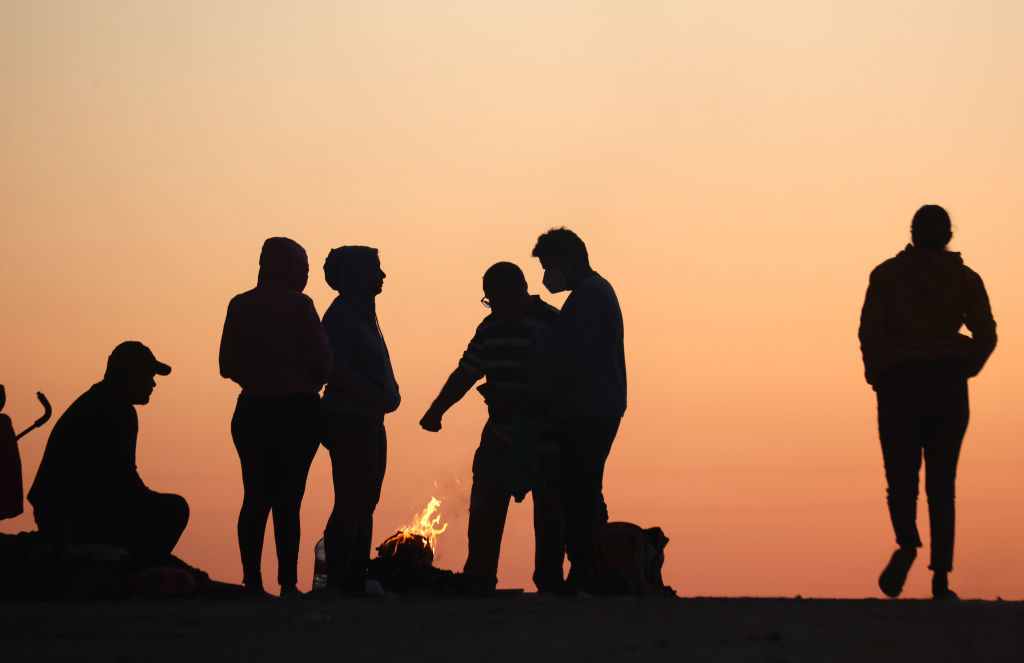Time to recall the bloody history of border crossings from Syria.
Facing Up to Immigration
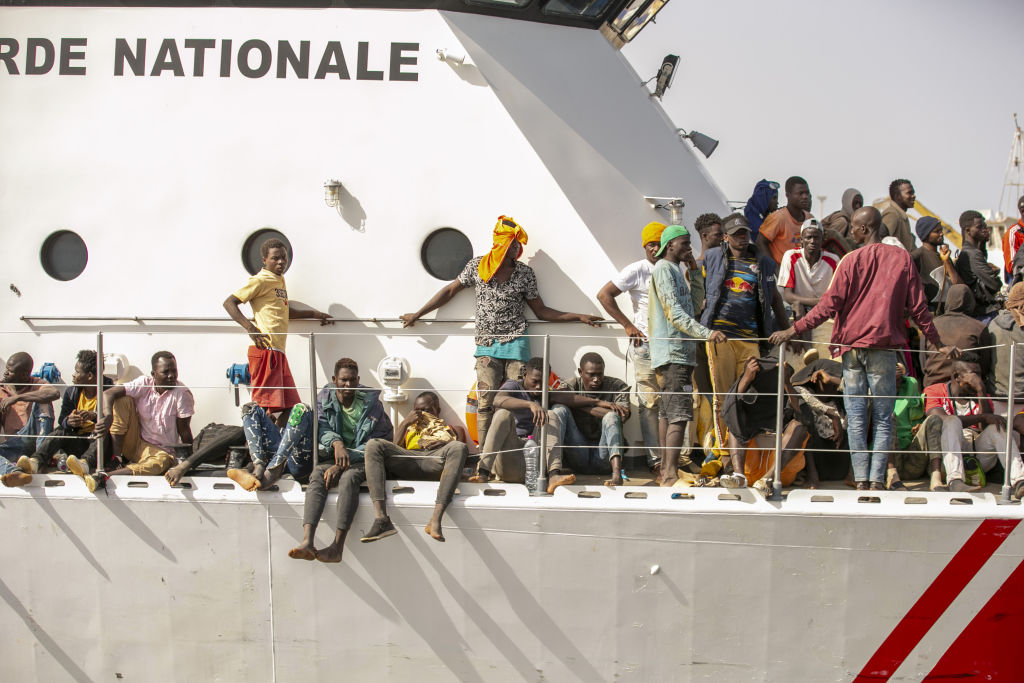
Europe can’t look the other way forever.
There is a tiny Italian island in the Mediterranean with picturesque cliffs, sandy beaches, and water as clear as the sky. The weather is pleasant, the food is excellent, and the locals are always happy to meet new faces. By all means, this hidden gem should be known as a tourist paradise. Instead, Lampedusa had come to be associated with much less inviting images: mass illegal migration, human trafficking, and innumerable deaths at sea. By now, Lampedusa had become the symbol of Europe’s utter failure to protect its borders.
Last month, Lampedusa became a household name worldwide after disturbing images of dozens of boats floating into the harbor spread on the internet like wildfire. Over 7,000 migrants with more than 120 boats arrived in a single day, an event that could only have been described as an “invasion,” especially given that the entire island is normally home to less than 6,000 inhabitants. The locals were furious, demanding that the reception center be moved. Italy’s neighbors began closing down their borders one by one, while Europe watched in horror, guessing what would happen next.
But though this may have been the first that some Westerners heard of Lampedusa, it was far from the beginning of the island’s troubles. It’s one of Europe’s southernmost islands, only 70 miles from the Tunisian coast—half the distance from there to Sicily. If someone wants to get into Europe illegally, it hardly gets easier than crossing the sea to Lampedusa. So, migrants have been continuously landing on the island for decades while Europe barely got closer to any kind of solution.
The first time the island made international headlines was in October 2013, after a Libyan migrant boat sank less than a mile from its shores, resulting in the death of over 360 people—the first of nearly 30 thousand who perished on the journey since. The tragedy should have been a warning sign for all of Europe. But instead of prompting governments to close illegal routes to avoid inviting further deaths, the false message of solidarity dictated open doors and furthered political incentives, attracting record numbers of migrants and smugglers alike.
In the following ten years, over a million migrants—85-90 percent of them young men—entered Italy illegally by crossing the Mediterranean. The number keeps growing every year. This year’s tally is at 140,000, nearly twice as many as in the same period last year. With the vast majority of them landing in Lampedusa, one wonders how the island can keep up with this unprecedented influx.
That’s why my colleague, Chris Tomlinson, and I traveled there in early October. What we saw was the perfect metaphor for what’s happening in Brussels’ migration policies writ large: A crisis swept under the rug. A steady stream of make-believe solutions to keep everyone content. And all the while, an ongoing stream of immigrants that flows unabated and unrestrained.
Arriving at the island, we were welcomed by a much different sight than we initially expected. Instead of refugees lining the streets or boats piling up in the harbor, we saw almost no indication of the chaotic scenes from a few weeks ago. It was a lazy, sunny day with tourists and locals cheerfully minding their business. Regardless, we slowly learned to pick up on the morsels, realizing that the tension was still lingering in the air. Armored police and military vans were everywhere; a few rusty old boats were still waiting to be disposed of at the beach; and most people suddenly tensed up when we tried to ask them about the subject.
After a day of not seeing any arrivals, we learned that most boats come in during the night. We set out in the evening to witness the process at the docks, hoping to get a glimpse of what was going on. At 1 a.m., the first boat arrived. We almost missed it: we were waiting for the kind of small, repurposed fishing vessel, barely seaworthy, that migrants usually use to undertake the journey. Instead, in what we came to realize had been made the official procedure, a Coast Guard ship was dispatched to meet them miles away. Then, as in all the other cases we saw, the migrants were taken aboard and brought into the harbor, leaving their own boat behind.
We should note that dozens of search-and-rescue NGOs operate similarly in the Mediterranean, but their method is much closer to that of human trafficking. Countless times they’ve been observed picking up migrants just after they leave the North African shores and ferrying them straight to Europe. They pass it off as a “rescue,” despite the fact that that term necessitates an accident, like a shipwreck, to be valid under maritime law. The practice has prompted conservatives throughout the continent to call for banning these organizations. But leftist governments, such as Germany’s, keep financing them anyway.
That night, the Coast Guard vessel docked at a closed-off pier on the southwest end of the harbor, guarded by the military. After disembarking, the newly arrived group was almost immediately put on two waiting Red Cross buses inside the restricted area and driven to the island’s migrant reception center two miles further inland. The operation was quick, silent, and seamless. In and out in less than 20 minutes. You wouldn’t notice a thing unless you stood at the gates.
Coast Guard personnel later confirmed that they do leave most of the boats just drifting on the sea after the rescue, despite it being common knowledge that traffickers often collect and reuse them. Leaving the boats is not just the simplest solution for them: it also contributes to the general goal of minimizing what locals and tourists might see of the whole ordeal.
The same is true of the reception center. We weren’t allowed to walk past its well-guarded and fortified gates, but we managed to interview the head of the local Red Cross overseeing the operations inside. She told us the refugees are allowed to leave the premises and go to town whenever they please—but the staff does everything to make sure they don’t want to, providing as much comfort and entertainment as possible under the circumstances. It was obvious that the less contact migrants had with everyone else on the island, the more peaceful everything was.
But all this effort to hide the visible signs of the crisis doesn’t change the fact that hundreds land on the island daily. The reception center was designed with a capacity for 400 people in mind. So after just one or two days, the migrants are put on ferries that transport them to bigger camps on the Italian mainland, where their asylum procedure begins—and where the last hope for effective European border protection ends.
A Sham Solution
We must note that Giorgia Meloni’s conservative Italian government is doing a commendable job, by all means. The prime minister recently introduced a whole series of tougher regulations to normalize the situation by closing a few loopholes in the law and punishing human trafficking more severely. But there is only so much Italy alone can do without wider European support, especially from Brussels.
The problem is that the procedure to determine someone’s eligibility can still take weeks or even months. Most migrants throw out their documents before reaching Lampedusa—often at the encouragement of NGOs—to hide the fact that they are not fleeing any recognized conflict. They are simply economic migrants, some of them from as far as Bangladesh or Pakistan. Being a minor significantly increases their chances for asylum too; small wonder 70 percent of them declare themselves to be 17. And while authorities are attempting to untangle thousands of such cases simultaneously, many of them disappear into the country and immediately turn north, toward the wealthier European countries, to escape deportation.
This is how Europe got into its current situation. Violent crime is on the rise in most Western European countries, drugs and homelessness have become endemic in many of the largest cities, and entire neighborhoods have been functionally given over to criminal gangs. Sweden, which once boasted the continent’s lowest rate of deadly shootings, is now the European capital of gun violence. Kids are advised to dress poorly to avoid being robbed in certain areas. France, Germany, Spain, and Belgium are not much better off either.
Consider the fresh example of the harrowing terror attack in Brussels this very week. The perpetrator was a Tunisian national with past convictions who landed in Lampedusa illegally three years ago. His asylum request was denied by three separate countries—Italy, Norway, and Sweden. He was flagged as an extremist by the Italian authorities and was known to the Belgian police. Still, he was allowed to stay in Europe, which led to the murder of two football fans simply because they were Swedish.
Europe is now at a crossroads. Illegal migration has become too visible an issue to ignore any longer; the continent must find a solution soon, or not at all. That is how the EU’s new flagship legislative package, the so-called Migration Pact, came to be, and for a time we all hoped it would sort out this mess once and for all. But the Pact—now nearing completion—turned into a flimsy scaffolding of make-believe solutions, just like the arrangement in Lampedusa but at a much larger scale. It is designed merely to conceal the fact that there will be no stop to mass migration whatsoever.
In rather simple terms, there are two sides to this debate. Both of them want tougher immigration rules, but there are significant differences in how they envision them—and the Left, along with the European Commission, made sure the Migration Pact will reflect their preferred worldview.
To be fair, the package will indeed widen the legal pathways to deport illegal economic migrants who had been denied asylum in Europe. It will also make border procedures quicker and the vetting process more effective. Moreover, there are plans in motion to create extensive partnerships with origin and transit countries to facilitate returns and tackle human trafficking.
But at the same time, the Migration Pact fails to reform the Dublin Regulation that permits illegal secondary movements within the Schengen Area, so that migrants can keep traveling from country to country with impunity once they make land. It also fails to stop illegal entries to the Union in the first place, by ignoring the need for external border protection. On top of that, it contains the controversial “compulsory solidarity” mechanism—a scheme to redistribute migrants among the member states or force them to pay enormous sums if they wish not to partake—which is the biggest reason Poland and Hungary vowed to continue vetoing the Pact.
During the past two years, the European Parliament’s leftist majority consistently sidestepped the Right as they pushed through each component of the Pact on all policy-making levels. The conservative forces in Brussels had little to no chance of even presenting their opinions, as parliamentary debates on migration usually devolve into shouting matches with the Left accusing the Right of inhumanity when faced with the suffering of refugees. The interests of Europeans are of a lesser concern, it seems, as just recently leftist parliamentarians went as far as to openly laugh at the fact that people die of gang violence every month.
Nonetheless, the conservative position is clear: all migration management initiatives must start at the borders. The internal borders of Europe can only stay open if the external ones are protected. Member states on the frontlines should be given funds and assistance to build up effective border control infrastructures—walls, fences, and so on—as Poland, Hungary, or Greece did despite the harsh criticism from Brussels. In the case of maritime borders, such as Italy’s, the entire asylum procedure should be moved to external processing centers outside of the EU—in Tunisia, for instance—so that only real refugees will be allowed to enter Europe. Those who are still caught crossing through illegal channels should be subjected to what is called the “Australia model”: banned from returning ever again.
Time’s Up
In short, the policies that incentivize illegal entries must be replaced with those that actively disincentivize them. As it stands today, the Migration Pact will not deter anyone from trying to cross to Europe, as it is hardly more than a repackaging of the previous soft rules that led to this crisis in the first place. That, in turn, will result in more deaths on the sea and give more reason for the European Left to advocate for open borders in the name of solidarity.
But first, several persistent myths need to be dealt with, the biggest of them all being that this is a “refugee crisis.” It’s time Europeans realized that the vast majority of new arrivals are simply economic migrants who abuse the European asylum policies after paying hefty sums to human smugglers, all while hurting the chances of those truly in need of our help by clogging the system.
Once we’re clear on that, we can move to the next widespread fallacy, namely that illegal migration cannot be stopped. Plenty of examples show that the external borders can—and must—be protected; it is only a matter of political will and of voting for politicians who keep the interests of their own electorate in sight instead of looking to score short-term brownie points from a mob of unhinged immigration maximalists.
President Reagan once famously said, “A nation that cannot control its borders is not a nation.” Perhaps it’s time for the nations of Europe to take note and start fighting back against the unelected, unaccountable bureaucracy of Brussels. Otherwise, they risk drowning their national character in an ever-growing sea of unrestrained mass migration. We cannot accept a life of silent fear, looking the other way and pretending nothing is happening as they do in Lampedusa. Reality is there, just behind the hill at the edge of town. It’s time we finally face it.
The American Mind presents a range of perspectives. Views are writers’ own and do not necessarily represent those of The Claremont Institute.
The American Mind is a publication of the Claremont Institute, a non-profit 501(c)(3) organization, dedicated to restoring the principles of the American Founding to their rightful, preeminent authority in our national life. Interested in supporting our work? Gifts to the Claremont Institute are tax-deductible.
Biden’s border crisis will have long-lasting effects on American society.
What America could learn from the E.U.’s migrant crisis.
Without major policy changes that secure our border, America will be overrun.

